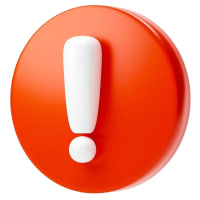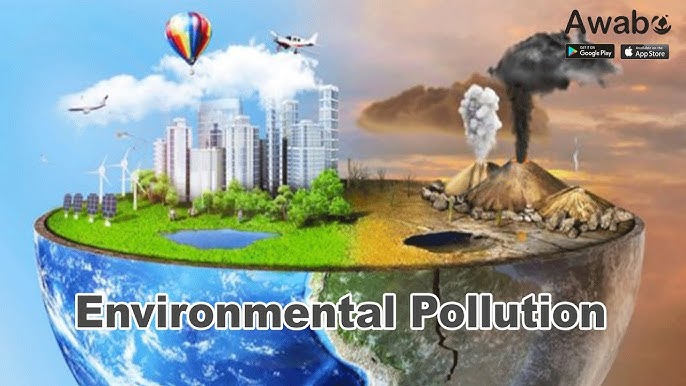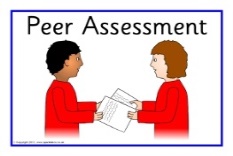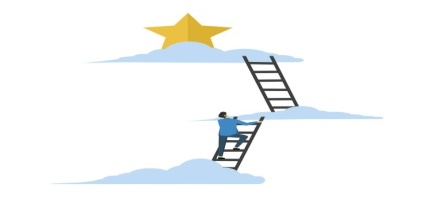
Short term plan
|
Unit 1: Our world lesson 5 |
School: |
||
|
Date: |
Teacher name: Kvach T.V. |
||
|
Grade: 8 V |
Number present: |
absent: |
|
|
Lesson title |
Pollution and the environment |
||
|
Learning objectives |
8.2.2.1 understand with little or no support most specific information in extended talk on a wide range of general and curricular topics 8.4.2.1 understand specific information and detail in texts on a growing range of familiar general and curricular topics, including some extended texts; 8.5.3.1 write with moderate grammatical accuracy on a growing range of familiar general and curricular topics |
||
|
Learning objectives (assessment criteria) |
Learners will be able to: - Learn vocabulary relating to the environment. - Listen to an account of someone who decided to make a difference to the environment. - Listen for general meaning and specific details. |
||
|
Stages/ Time |
Teachers actions |
Students actions |
Assessment |
Resources |
|
Beginning 10 min |
Greeting. (Whale class, Individually) T tells the class to make groups of 2. Warm up: With books closed, ask students what things they already do to help the environment. Write students’ ideas on the board. Ask what other things people can do to help the environment. Ask if they think that an individual can make a big difference. Encourage students to express their own opinions Setting the aim of the lesson.
|
Learners read the given sentences on the board and guess the topic and share with their ideas. Remember and recognize the main vocabulary. |
Teacher controles the process, gives feedback and asks additional questions if it’s nessasery. Teacher evaluate pupils with phrases like: “Good job! Well done!” Formative Assessment |
Sheets of peppers Pictures of to be
https://images.app.goo.gl/TcJ98Xo8rUKyedJr9
|
|
Middle 5 min |
Task. I (Wh, I) (pair dicsussion) Ex: 1 P: 12 Students use their dictionaries to check the meaning of the words and choose the correct words in the text. Students listen to the complete text to check their answers. Encourage them to correct any mistakes. Check answers and model and drill pronunciation. |
Learners check the meaning of the words in blue. Choose the correct words. Then listen and check ANSWERS : 1 throw away 2 reuse 3 recycle 4 destroy 5 burn 6 poisons 7 bury |
T’s feedback Descriptor: - check the meaning of the words - Choose the correct words Total: 2 points |
Student’s book |
|
5 min |
Task. II (Wh, I) (Task for location) Ex: 2 P: 12 Allow students time to read through the questions individually before they ask and answer in pairs. Elicit some answers from the class. If students are interested in the subject, you could conduct a short class discussion on some of the issues raised |
Learners work in pairs. Ask and answer the question ANSWERS : Students’ own answers |
Self -assessment
Descriptor: - work in pairs. - ask and answer Total: 2 points |
Worksheets Student’s book |
|
5 min |
Task. III (Task for understanding) Ex: 3 P: 12 Focus on the pictures and ask students which problem they think Rebecca Hosking was concerned about. Explain that the sentences summarize different parts of the text, but that they are in the wrong sequence. Ask students to read the sentences carefully, and check vocabulary with them. Encourage students to think about the key words carrying meaning in each sentence, as this will help them when they listen. After students have put the information about Rebecca in order, allow them to listen to check their answers. Find out how many guessed the sequence correctly. Differentiation: Learners read the information, but only more of them put the information about Rebecca in order, less able learners work with teacher’s little support. |
Learners read the information about Rebecca Hosking Order sentences then listen and check. ANSWERS: b, d, a, c |
Teacher’s comment Feedback: “Thumbs up, thumbs down” After correct answer teacher shows thumbs up, if there are some mistakes thumbs down with comments Descriptor: - read the information - listen and check Total: 2 points |
Pictures Worksheet |
|
5 min |
Task. V Ex: 4 P: 12 Allow students time to read the questions. Explain that in a true / false task, they should read the statements they are given very carefully. They may hear the opposite of these statements, so encourage them to think about relevant vocabulary first. In a stronger class, ask if students can answer any of these before they listen again. TAPESCRIPT Hello and welcome to SOS Environment. Today we are in a pretty seaside town in the south of England. We continue our radio series with the Battle of the Bags. Rebecca Hosking lives near the coast in the south of England. When she saw how plastic was affecting marine life she decided to do something. This is the story of a young woman who decided to change people’s ideas. Rebecca Hosking is a professional camerawoman who lives near the sea. She loves the sea and sea animals, but she was shocked and upset whilst she was filming a wildlife documentary in the Pacific, because she saw how many animals were dying because of all the plastic in the sea. People throw away plastic, but they don’t think about where it goes. Unfortunately, too much plastic goes into the sea, and there are now millions of tons of plastic in our oceans. Sometimes animals, such as sea birds, for example, think that it’s food and they eat it. It poisons them. They also play with pieces of plastic and they get inside bags, but then they can’t escape from them. In Rebecca’s opinion, we don’t recycle enough and we use too much plastic and too many plastic bags. She decided to do something about plastic bags in her home town. First, she spoke to the council, but they were too busy. Then she spoke to everybody in the town who had a shop, and told them how plastic was polluting the sea. She organised a meeting with the shopkeepers and they all discussed the problem. They agreed that the problem was serious enough, so they talked to everyone in the town. They decided to stop using plastic bags, but they needed something new. So now all the shops in the town sell cloth bags which are better because people can reuse them. Rebecca’s town is the first place in Britain where there are no plastic bags. Nobody will give you a plastic bag, thanks to Rebecca. When there are enough people interested in an environmental problem then it’s possible to change things. If you want to know more about the Battle of the Bags or how you can help with other environmental problems in your town, look at our website. T asks some CCQs:
|
Learners listen again and write true or false. Correct the false sentences. ANSWERS: 1 False. The speaker is the presenter of SOS Environment. 2 True. 3 False. She was shocked when she saw how many creatures were dying because of all the plastic in the sea. 4 True. 5 False. None of the shops give plastic bags. 6 True. Learners answers Yes or No in CCQ ANSWERS -No -Yes - Yes |
- look at the key phrases. - listen again and write true or false Total: 2 points Descriptor: - answers Yes or No |
|
|
5 min |
Task. IV Ex: 5 P: 12 Read the task with the class and check understanding. Allow students time to read through the items in the box. Model the pronunciation. This will help with the task, as it will familiarize students with the sound of the words. In a weaker class, provide copies of the tapescript after students have completed the exercise to clarify which words they heard. P: We decided to return to Rebecca Hosking’s town a year after she started fighting the bags. Here’s Tina Owen, our correspondent from the town of Modbury. What is different in the town today, Tina? T: Hello there. Well to start with, it’s impossible to find a plastic shopping bag anywhere. But the most important thing is that people are looking for other ways of getting rid of plastic and other dangerous products. As Rebecca Hosking says, bags are only a very, very small part of the problem. Shopkeepers are replacing plastic packaging with brown paper bags. They’re doing this for things like plastic sandwich boxes. Glass bottles are replacing plastic ones. You can buy green washing powder in cardboard boxes now. The main thing is that people are trying to change their habits and they’re talking about it. |
Learners listen to a reporter in Rebbecca’s town. Tick the things she mentions. ANSWERS: cardboard boxes, plastic bags, washing powder, paper bags, plastic sandwich boxes |
T’s feedback
Descriptor: - listen to a reporter - tick the things Total: 2 points |
|
|
End 5 min |
The Ladder method was used as a reflection. T asks Ss to stick their stickers to the Success Ladder. Green- I understood Yellow-I have some questions Red-I need a help. Home task |
Ss use their stickers to show their knowledge according to the lesson
|
Poster Success Ladder |
|
жүктеу мүмкіндігіне ие боласыз
Бұл материал сайт қолданушысы жариялаған. Материалдың ішінде жазылған барлық ақпаратқа жауапкершілікті жариялаған қолданушы жауап береді. Ұстаз тілегі тек ақпаратты таратуға қолдау көрсетеді. Егер материал сіздің авторлық құқығыңызды бұзған болса немесе басқа да себептермен сайттан өшіру керек деп ойласаңыз осында жазыңыз
Pollution and the environment
Pollution and the environment
Short term plan
|
Unit 1: Our world lesson 5 |
School: |
||
|
Date: |
Teacher name: Kvach T.V. |
||
|
Grade: 8 V |
Number present: |
absent: |
|
|
Lesson title |
Pollution and the environment |
||
|
Learning objectives |
8.2.2.1 understand with little or no support most specific information in extended talk on a wide range of general and curricular topics 8.4.2.1 understand specific information and detail in texts on a growing range of familiar general and curricular topics, including some extended texts; 8.5.3.1 write with moderate grammatical accuracy on a growing range of familiar general and curricular topics |
||
|
Learning objectives (assessment criteria) |
Learners will be able to: - Learn vocabulary relating to the environment. - Listen to an account of someone who decided to make a difference to the environment. - Listen for general meaning and specific details. |
||
|
Stages/ Time |
Teachers actions |
Students actions |
Assessment |
Resources |
|
Beginning 10 min |
Greeting. (Whale class, Individually) T tells the class to make groups of 2. Warm up: With books closed, ask students what things they already do to help the environment. Write students’ ideas on the board. Ask what other things people can do to help the environment. Ask if they think that an individual can make a big difference. Encourage students to express their own opinions Setting the aim of the lesson.
|
Learners read the given sentences on the board and guess the topic and share with their ideas. Remember and recognize the main vocabulary. |
Teacher controles the process, gives feedback and asks additional questions if it’s nessasery. Teacher evaluate pupils with phrases like: “Good job! Well done!” Formative Assessment |
Sheets of peppers Pictures of to be
https://images.app.goo.gl/TcJ98Xo8rUKyedJr9
|
|
Middle 5 min |
Task. I (Wh, I) (pair dicsussion) Ex: 1 P: 12 Students use their dictionaries to check the meaning of the words and choose the correct words in the text. Students listen to the complete text to check their answers. Encourage them to correct any mistakes. Check answers and model and drill pronunciation. |
Learners check the meaning of the words in blue. Choose the correct words. Then listen and check ANSWERS : 1 throw away 2 reuse 3 recycle 4 destroy 5 burn 6 poisons 7 bury |
T’s feedback Descriptor: - check the meaning of the words - Choose the correct words Total: 2 points |
Student’s book |
|
5 min |
Task. II (Wh, I) (Task for location) Ex: 2 P: 12 Allow students time to read through the questions individually before they ask and answer in pairs. Elicit some answers from the class. If students are interested in the subject, you could conduct a short class discussion on some of the issues raised |
Learners work in pairs. Ask and answer the question ANSWERS : Students’ own answers |
Self -assessment
Descriptor: - work in pairs. - ask and answer Total: 2 points |
Worksheets Student’s book |
|
5 min |
Task. III (Task for understanding) Ex: 3 P: 12 Focus on the pictures and ask students which problem they think Rebecca Hosking was concerned about. Explain that the sentences summarize different parts of the text, but that they are in the wrong sequence. Ask students to read the sentences carefully, and check vocabulary with them. Encourage students to think about the key words carrying meaning in each sentence, as this will help them when they listen. After students have put the information about Rebecca in order, allow them to listen to check their answers. Find out how many guessed the sequence correctly. Differentiation: Learners read the information, but only more of them put the information about Rebecca in order, less able learners work with teacher’s little support. |
Learners read the information about Rebecca Hosking Order sentences then listen and check. ANSWERS: b, d, a, c |
Teacher’s comment Feedback: “Thumbs up, thumbs down” After correct answer teacher shows thumbs up, if there are some mistakes thumbs down with comments Descriptor: - read the information - listen and check Total: 2 points |
Pictures Worksheet |
|
5 min |
Task. V Ex: 4 P: 12 Allow students time to read the questions. Explain that in a true / false task, they should read the statements they are given very carefully. They may hear the opposite of these statements, so encourage them to think about relevant vocabulary first. In a stronger class, ask if students can answer any of these before they listen again. TAPESCRIPT Hello and welcome to SOS Environment. Today we are in a pretty seaside town in the south of England. We continue our radio series with the Battle of the Bags. Rebecca Hosking lives near the coast in the south of England. When she saw how plastic was affecting marine life she decided to do something. This is the story of a young woman who decided to change people’s ideas. Rebecca Hosking is a professional camerawoman who lives near the sea. She loves the sea and sea animals, but she was shocked and upset whilst she was filming a wildlife documentary in the Pacific, because she saw how many animals were dying because of all the plastic in the sea. People throw away plastic, but they don’t think about where it goes. Unfortunately, too much plastic goes into the sea, and there are now millions of tons of plastic in our oceans. Sometimes animals, such as sea birds, for example, think that it’s food and they eat it. It poisons them. They also play with pieces of plastic and they get inside bags, but then they can’t escape from them. In Rebecca’s opinion, we don’t recycle enough and we use too much plastic and too many plastic bags. She decided to do something about plastic bags in her home town. First, she spoke to the council, but they were too busy. Then she spoke to everybody in the town who had a shop, and told them how plastic was polluting the sea. She organised a meeting with the shopkeepers and they all discussed the problem. They agreed that the problem was serious enough, so they talked to everyone in the town. They decided to stop using plastic bags, but they needed something new. So now all the shops in the town sell cloth bags which are better because people can reuse them. Rebecca’s town is the first place in Britain where there are no plastic bags. Nobody will give you a plastic bag, thanks to Rebecca. When there are enough people interested in an environmental problem then it’s possible to change things. If you want to know more about the Battle of the Bags or how you can help with other environmental problems in your town, look at our website. T asks some CCQs:
|
Learners listen again and write true or false. Correct the false sentences. ANSWERS: 1 False. The speaker is the presenter of SOS Environment. 2 True. 3 False. She was shocked when she saw how many creatures were dying because of all the plastic in the sea. 4 True. 5 False. None of the shops give plastic bags. 6 True. Learners answers Yes or No in CCQ ANSWERS -No -Yes - Yes |
- look at the key phrases. - listen again and write true or false Total: 2 points Descriptor: - answers Yes or No |
|
|
5 min |
Task. IV Ex: 5 P: 12 Read the task with the class and check understanding. Allow students time to read through the items in the box. Model the pronunciation. This will help with the task, as it will familiarize students with the sound of the words. In a weaker class, provide copies of the tapescript after students have completed the exercise to clarify which words they heard. P: We decided to return to Rebecca Hosking’s town a year after she started fighting the bags. Here’s Tina Owen, our correspondent from the town of Modbury. What is different in the town today, Tina? T: Hello there. Well to start with, it’s impossible to find a plastic shopping bag anywhere. But the most important thing is that people are looking for other ways of getting rid of plastic and other dangerous products. As Rebecca Hosking says, bags are only a very, very small part of the problem. Shopkeepers are replacing plastic packaging with brown paper bags. They’re doing this for things like plastic sandwich boxes. Glass bottles are replacing plastic ones. You can buy green washing powder in cardboard boxes now. The main thing is that people are trying to change their habits and they’re talking about it. |
Learners listen to a reporter in Rebbecca’s town. Tick the things she mentions. ANSWERS: cardboard boxes, plastic bags, washing powder, paper bags, plastic sandwich boxes |
T’s feedback
Descriptor: - listen to a reporter - tick the things Total: 2 points |
|
|
End 5 min |
The Ladder method was used as a reflection. T asks Ss to stick their stickers to the Success Ladder. Green- I understood Yellow-I have some questions Red-I need a help. Home task |
Ss use their stickers to show their knowledge according to the lesson
|
Poster Success Ladder |
|

шағым қалдыра аласыз


















